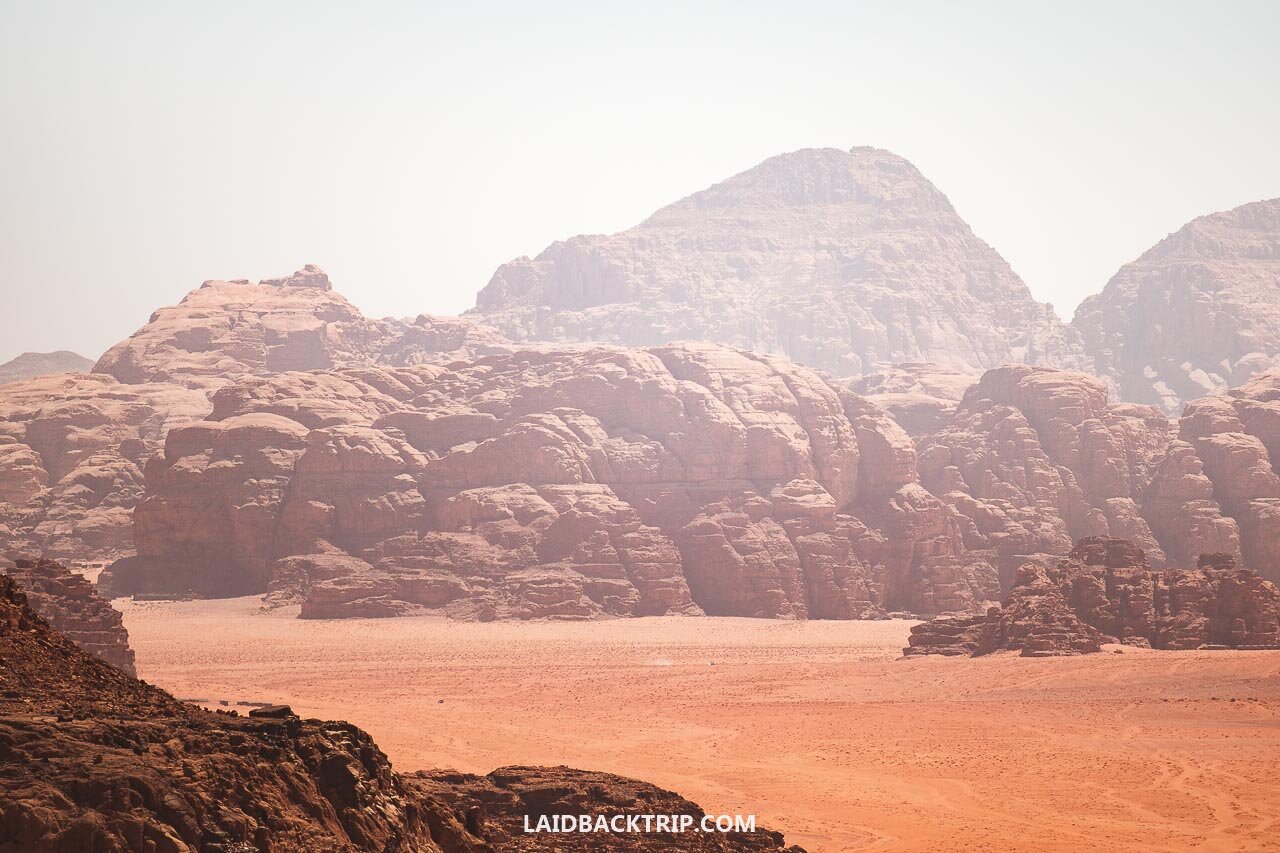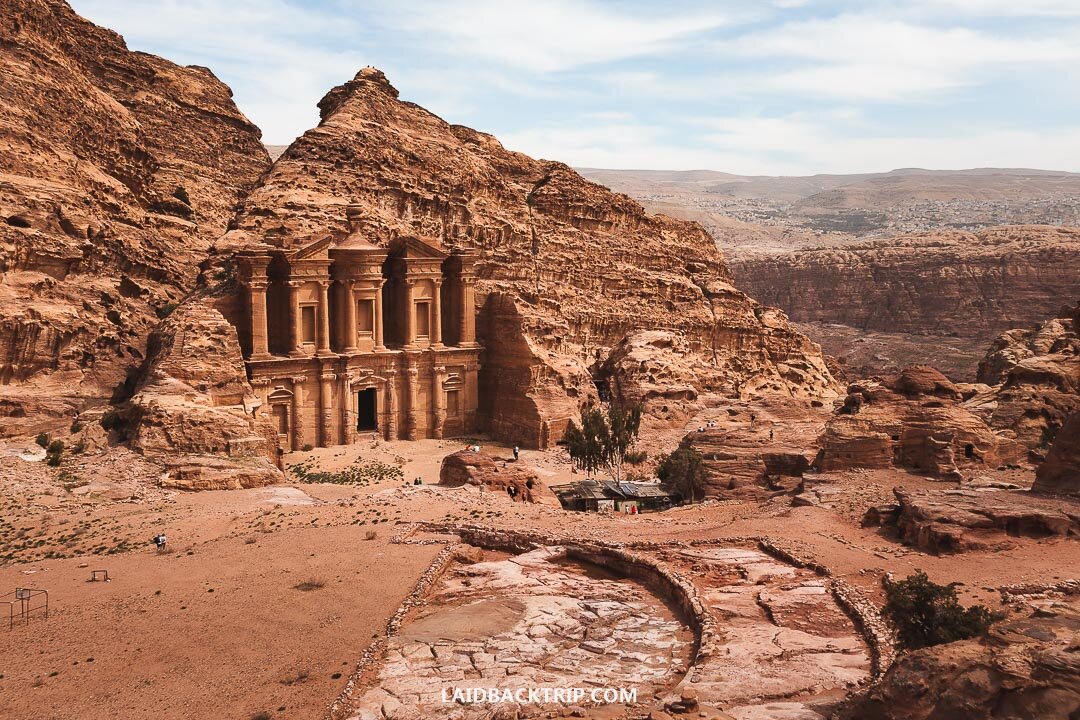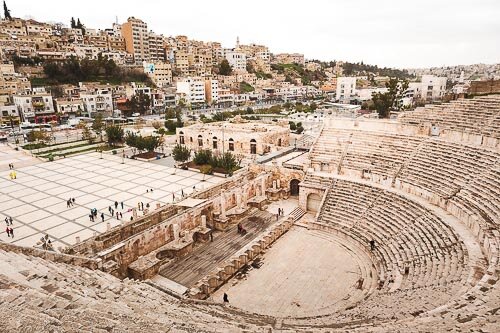The Best Time to Visit Jordan
Are you planning your trip to Jordan soon? Then you are probably looking for as much information about the country as possible. One of the important topics is the weather. When is the best time to travel to Jordan? What is the right time to visit this small kingdom in the Middle East? We've got you covered.
When traveling to a foreign country and looking for practical information, we always get stuck on a problem when it comes to weather.
Like most travelers, we want to find the best compromise between pleasant temperatures, rain-less days, reasonable prices, and a comfortable number of visitors in our chosen destination.
Unsurprisingly, we dealt with the same issue when we were planning our trip to Jordan.
For long, we had been intrigued by this country, and as we knew our time in the country would be limited, we went through all resources available and tried to predict what would be the best month for our holidays.
Unlike Martin, I must admit, that sometimes I can be a bit crazy when it comes to weather forecasts.
Usually, I start checking the weather apps about two weeks before our departure and can change our plans just based on the forecast (of course, when it is possible).
And this is exactly what I did only one day before our flight to Jordan.
We prepared our Jordan itinerary quite thoroughly and left the highlights such as Petra and Wadi Rum for the end of our stay.
But since the weather forecast looked pretty bad for these two particular days, as a big cold front was coming, we decided to travel the country in the opposite direction.
It is necessary to say that this time this risk was definitely worth it, as the weather forecast was correct this time, and we experienced only two rainy afternoons in Jordan.
One when we were driving along Desert Castles and one when we were in Amman, almost done with sightseeing.
But enough talking about our experience, by now you are most likely craving to finally find out when is the best time to visit Jordan.
Even though Jordan is often considered to be an all-year-round destination, it is not that easy.
The country goes through four seasons - spring, summer, autumn, and winter - and the conditions during each season are quite distinct.
Even though most of the country is covered with deserts, it still can rain, and days and nights can be chillier than you would have expected.
But on the other hand, more pleasant weather often goes hand in hand with more crowds and skyrocketing prices. This is always something every traveler must factor in when making the decision.
In this blog post, we answer the question when is the best time to visit Jordan.
Of course, it is necessary to take into account that we are still talking here about the weather which is often unpredictable. And as an old saying goes, there is not bad weather, only inappropriate clothing. But more about it in one of our future posts where we share best packing tips for Jordan.
Are you wondering when is the best time to travel to Jordan?
Hopefully, this blog post will help to find the perfect period for you.
WHEN TO VISIT JORDAN
As we've mentioned before, Jordan has four distinct seasons. Winter is usually the coldest time of the year with almost no foreign visitors, spring brings flowers in bloom, summer is known for scorching heat and autumn for its unpredictable weather.
Before you book your flight tickets, you should also consider activities you plan on doing in Jordan.
If your main intention is to lie on a beach in a resort town of Aqaba near the Red Sea, you can arrive in Jordan almost anytime, although some months are hotter than others.
If you prefer hiking, avoid summer months when the heat can be almost unbearable, although Wadi Mujib is closed in winter.
Dou you love sightseeing?
Then any month of the year with proper clothing might be the right for you.
JORDAN IN SPRING
In spring, between March and May, the country starts to warm up.
Slowly, but the winter times are definitely over. We traveled to Jordan in March and found this month perfect for exploring the country.
Why? Well, the temperatures are still pleasant and perfect for exploring cities such as Madaba, (even though it was pretty hot for us in Petra and Wadi Rum), the chance of rain is lower (even though it is still there), and tourists are only about to start flooding the country.
What we found amazing at the beginning of spring in Jordan were the flowers in bloom.
The Jordan Valley, city of Salt, and especially the area around Jerash Ruins were blanketed by colorful flowers which made this place even more charming. Days during spring are getting longer, so you will have enough time for your fair share of sightseeing as well.
Yes, the weather can be still a bit unpredictable, but it is compensated by a lower number of visitors. For example, we met only a handful of tourists at the Karak Castle or on the King's Highway in general.
The other two spring months, April and May, on the other hand, have recently become very popular.
The reason is the more stable weather, pleasant temperatures, and perfect hiking opportunities (and yes, the flowers are still in bloom). But not everything is that positive.
Because of the higher demand prices of accommodation and rental cars grow, and it is essential to make your reservations well in advance.
Aqaba, the Dead Sea area and Wadi Rum get really warm in April and May, which is ok unless you have trouble with your heart.
JORDAN IN SUMMER
Summertime in Jordan spans June until the end of August, and even though you might think this period is the best time to visit Jordan, wait a bit before you make your final decision.
Summer in Jordan is hot. Like really really hot.
Temperatures during the day can exceed 40 °C (the Dead Sea area and Aqaba often report temperatures even exceeding 45 °C), which is not very pleasant, especially when you plan on doing a lot of sightseeing.
There is a reason why locals usually do not go out during these three months between noon and 3 PM, the heat can often be unbearable.
If you decide to travel to Jordan in summer, always have a bottle of water handy, and do not exaggerate your physical abilities.
It is always worth it to take a break in the shade, when possible.
Sunglasses and bandana or hat to cover your head are a must. If you can function well in the heat, good for you.
Especially if you want to visit places in the desert such as Qusayr Amra, Qasr Kharana, and Azraq Castle that are located on the Desert Castle Loop or the famous Wadi Rum.
READ MORE:
Summer is not the main season in Jordan (you will most likely meet here travelers from the region who are used to these conditions), and prices drop.
Also, you will enjoy really long days (up to 13 hours of daylight), so you will have plenty of time for sightseeing, top attractions also have longer opening hours.
It is also good to know that the warm weather does not bring humidity, which makes the situation a bit more pleasant than, for example, in Southeast Asian countries such as Vietnam or Philippines.
It rarely rains in Jordan between June and August, but your photo opportunities might be limited because of the omnipresent haze.
Also, the warm wind called sirocco blows constantly and often brings dust storms.
Well, as you can see, traveling in Jordan in summer has its pros and cons as well.
We think that older people or families with kids should avoid this time of the year as traveling won't be that comfortable.
For the rest of you, who do not mind extreme temperatures, getting around Jordan in the summer might be just fine, you'll be just more sweaty than usual.
A rental car with aircon is a must.
Travel Insurance
We never leave home without travel insurance that was designed to cover our expenses if something goes wrong during the trip.
Travel insurance protects against theft, flight delays, injury, illness, cancellations, and much more.
World Nomads provides travel insurance for travelers to cover their trip essentials, including sports and adventure activities.
SafetyWing is affordable travel insurance for backpackers, long-term travelers, and digital nomads.
Travel smarter and safer!
JORDAN IN AUTUMN
Autumn, from September to November, is after the spring the second most popular period to visit Jordan.
The heat begins to wear off (even though it is still quite hot in September and October), the wind fades away, and the country finally starts to see some rain, so the earth is not that gray and yellow anymore.
If you want to avoid rains, arrive in September until mid-October, November is usually quite rainy as it slowly flows over into winter.
If you are arriving in Jordan particularly because of scuba diving and snorkeling in the Red Sea, autumn is actually your best bet.
The water is pleasantly warm, the visibility is great, and wildlife abundant.
Accommodation in Aqaba is a valuable commodity during this time, so book your stay well ahead. Temperatures for the sightseeing are more pleasant and both Petra and Wadi Rum are in their best.
In general, autumn is a great time to travel in Jordan, although it is the least distinct season, especially moths of September and October when it often in most of the country feels like it is still summer, only with not that many days with unbearable temperatures.
It is a good choice for travelers who want to secure pleasant weather and lock down a bit better rates than are available in April and May.
This time of the year will be great for exploring places such as Mount Nebo, Umm ar-Rasas or Mukawir.
JORDAN IN WINTER
Winter in Jordan lasts between December and February, and it is the quietest time of the year when it comes to tourism.
So if you want to avoid the crowds, or if you are traveling on a super-tight budget, this might be the right time for you to travel to Jordan.
But here we would like also emphasize that since the weather is very unpredictable and strong downpours can affect your plans (some attractions might be even closed), we would recommend this time of the year to more flexible travelers and for those of you who do not mind a bit of discomfort.
And what exactly can you expect from traveling in Jordan in winter?
December and January are the wettest months of the year (70% of the rainfall falls during this period), so packing an umbrella or a rain poncho is a must.
Also, it can get pretty windy, especially in Amman is known for biting winds, so have your windbreaker ready.
Days in winter are pretty chilly (nights are even colder), and it can even snow not only in Amman, but also in Petra.
Sometimes you can see frost even in the most famous desert in the country, Wadi Rum (Wadi Rum is actually really cold between December and February at night).
In general, you can expect temperatures around 5 - 10 °C during the day, which for us, who live in Prague (and lived in super cold Calgary for a year) sounds pretty ok.
But it is not that pleasant when it rains and you have nowhere to hide.
It is necessary to say that the sun often penetrates the clouds, and even in the winter you can experience pleasant days, especially closer to the Red Sea.
For more warm temperatures, head either to the Dead Sea area or to Aqaba, which is an all-year-round retreat.
We think it is important to know that same as in Europe in winter, the sun shines only for a limited time of the day, in Jordan it is about six hours a day between December and February, which is something you definitely have to take into account when planning your itinerary.
Simply put, in winter you won't be able to see that much in one day as you would in summer.
Travel Resources
Here you can find links to all the travel resources we use and which you might find helpful when planning your next holiday.
Accommodation: When looking for accommodation, we usually search hotels via Booking.com or Hostelworld.
Tours: Although we love to travel independently, some places are better to visit with a guided tour.
We prefer GetYourGuide for its easy-to-use interface and solid reputation. Another great alternative is Viator.
Rental Cars: When going on a road trip, we always use Rentalcars.com, a reliable site for booking a rental car in advance.
Flight Tickets: When looking for flight tickets, you can search Skyscanner to find the best price.
Travel Insurance: World Nomads and SafetyWing cover against risks of travel.













